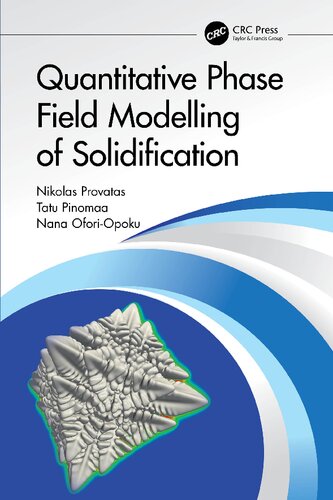

Most ebook files are in PDF format, so you can easily read them using various software such as Foxit Reader or directly on the Google Chrome browser.
Some ebook files are released by publishers in other formats such as .awz, .mobi, .epub, .fb2, etc. You may need to install specific software to read these formats on mobile/PC, such as Calibre.
Please read the tutorial at this link. https://ebooknice.com/page/post?id=faq
We offer FREE conversion to the popular formats you request; however, this may take some time. Therefore, right after payment, please email us, and we will try to provide the service as quickly as possible.
For some exceptional file formats or broken links (if any), please refrain from opening any disputes. Instead, email us first, and we will try to assist within a maximum of 6 hours.
EbookNice Team

Status:
Available4.5
37 reviewsThis book presents a study of phase field modelling of solidification in metal alloy systems. It is divided in two main themes. The first half discusses several classes of quantitative multi-order parameter phase field models for multi-component alloy solidification. These are derived in grand potential ensemble, thus tracking solidification in alloys through the evolution of the chemical potentials of solute species rather than the more commonly used solute concentrations. The use of matched asymptotic analysis for making phase field models quantitative is also discussed at length, and derived in detail in order to make this somewhat abstract topic accessible to students. The second half of the book studies the application of phase field modelling to rapid solidification where solute trapping and interface undercooling follow highly non-equilibrium conditions. In this limit, matched asymptotic analysis is used to map phase field evolution equations onto the continuous growth model, which is generally accepted as a sharp-interface description of solidification at rapid solidification rates.
This book will be of interest to graduate students and researchers in materials science and materials engineering.
Key Features